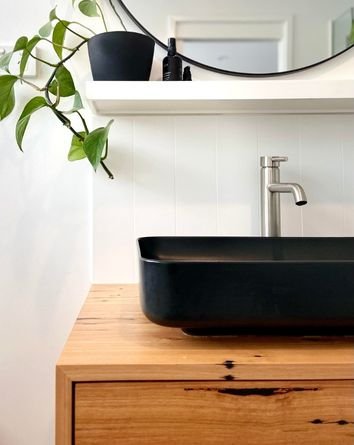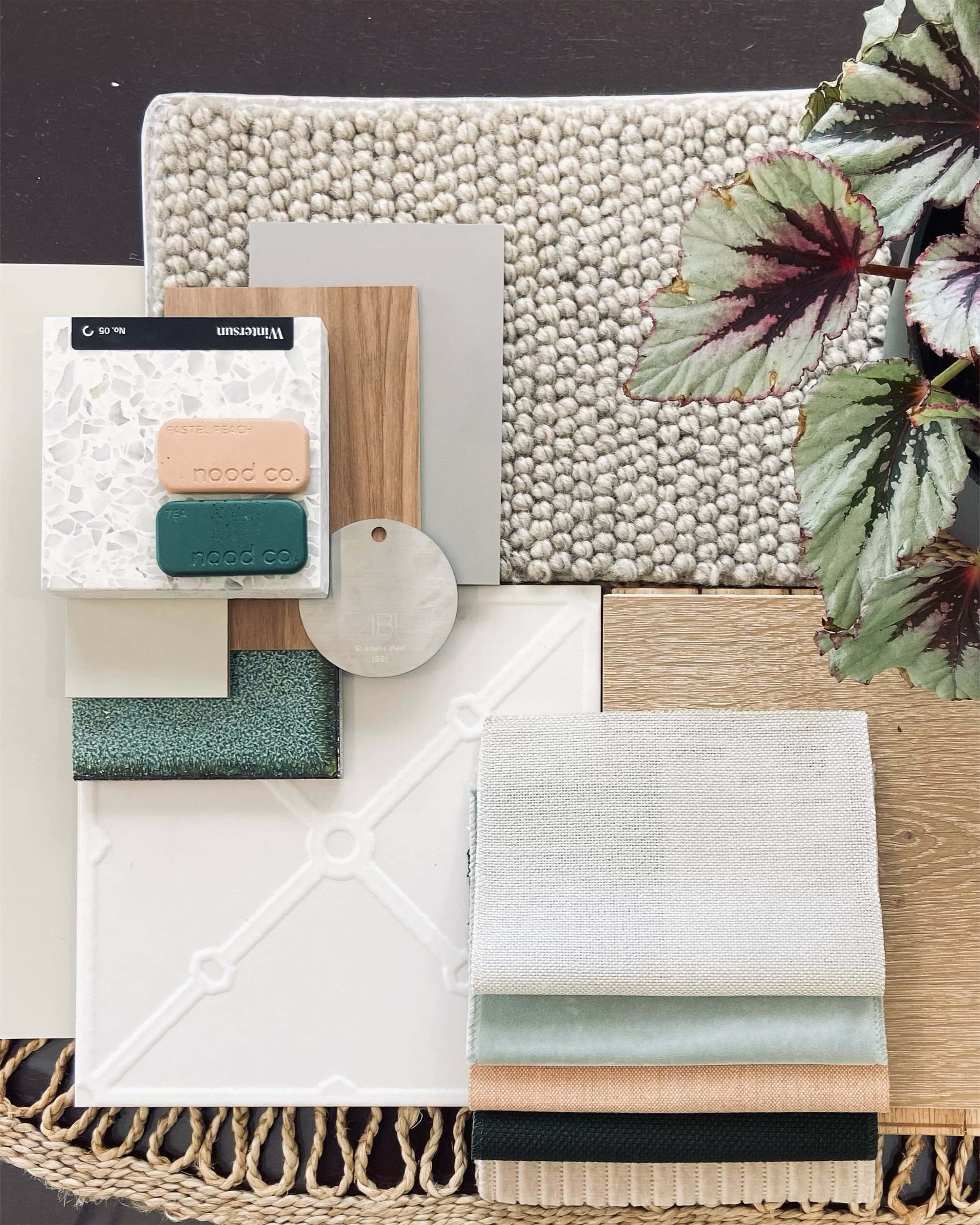The Increasing Toxicity of New Buildings
The Impact on Our Health
Since the 1930’s, over 100,000 chemical compounds have been incorporated into communities, and approximately 95% of those used within building materials do not have adequate evidence of their safety, when it comes to health (Pacheco-Torgal, 2012).
The Conundrum of Today’s Construction
“Innovative” new building materials and furnishings are increasingly being introduced into the market, being driven by improved mechanical characteristics and lower manufacturing expenses.
Many new and unconventional products do not have sufficient protocols to accurately measure toxicity, and therefore their toxicity is unknown (Rey-Álvarez et al., 2022).
Common sources of toxins within interior materials and products include:
Wood-based products, E.g. plywood, MDF, particle board;
Paints;
Carpets, especially synthetic options;
PVC materials;
Plastics;
Textiles;
And you likely have multiple sources within your home or office. That’s also in addition to:
Artificially-fragranced products;
Cleaning products;
Pesticides;
Gas from cooking appliances;
Additional chemical treatments, like fire retardants or stain resistant coatings.
Take polyester, for example, in an internal curtain application. They typically possess lower price points than a sustainable woollen alternative, because they’re much cheaper to manufacture.
Though, being a synthetic material originating from fossil fuels (much like the plastic industry), it is flammable.
And then we go and apply a fire-resistant chemical treatment to the synthetic textile. So yes, we may be saving money on cheaper options, but they often come with more toxins and greater health implications.
The toxins emitted from common building materials and finishes can accumulate within the air, and can lead to toxic exposure via inhalation, ingestion and dermal absorption. A recent study revealed that illness associated with compromised indoor air quality is on par with tobacco smoking and unhealthy diets (Niculita-Hirzel, 2022).
The Evolution of our Toxic Environment
The ‘energy crisis’ of the past few decades has influenced an increase in airtightness to buildings. Subsequently, reduced fresh air circulates through homes. And in addition, there’s been an increase in synthetic building materials and furnishings, and the use of pesticides, chemical cleaning products and gases from cooking appliances (Mannan & Al-Ghamdi, 2021).
Over the last century, society has prioritised cost effectiveness and time efficiency (understandably!). But that unfortunately has had significant consequences to the environment and human health, and, will continue to for generations without drastic changes now.
For example, between the 1920s and post-WWII, vinyl products (which typically contain toxic phthalates as their plasticisers) began to supersede its predecessors made from natural camphor and linseed oil (like in linoleum products).
A study conducted of established and newly-built homes within Melbourne, concluded that the interior toxicity of volatile organic compounds (VOC) and formaldehyde (HCHO) levels within established homes were four times the toxicity of the exterior sample concentrations. Yet contrastingly, recent renovations and newly-built homes demonstrated one to two orders higher in toxic concentrations than within established home interiors (Brown, 2002).
Now, as mentioned above, VOCs are not the only interior toxins we should be concerned about. Sadly, they’re just some of only ones that are more widely understand and receive exposure of being harmful. The rest, primarily, do not – Toxins such as, phthalates, polychlorinated biphenyls, polybrominated fire retardants, pesticides, heavy metals, and more.
Toxicity in Buildings is a Real Problem…
And it’s a two-prong issue…
Firstly, the realm of “toxicity,” when it comes to buildings, has largely not been part of the expertise of the construction industry (Pacheco-Torgal, 2022). And that is, by no means, a criticism to any builder, architect, designer, engineer, and the like. In Australia anyway, I strongly believe the regulations fall short, quite short, right down to the core of education and training on the matter.
When I studied my degree in Interior Design, out of the whole course duration, I only recall spending one term on the topic of ‘Sustainability’ (though check out the previous blog post, that ‘sustainability’ does not necessarily respond to your health, only to that of the environment!). There were classes in Studio (the more practical, creative ones), construction, technology, design history, and more, and we undertook industry work placement. But nothing really specific to health.
And secondly, we as a society have become so accustomed to this current way of building - a perception of safety and good health from our homes. Or rather, a misperception that our homes couldn’t possibly cause us ill health. I know, first hand, that it can (check out this previous post on that).
How It Needs to Change
Many studies and evidence to date, on specific toxins, focus on the ‘use’ phase of a building material, and in a very limited perspective. That being, a single material addresses toxins within that material only, in relation to the daily exposure limit for humans.
But what about cases where multiple building materials contain that same toxin? Accumulated exposure and estimated health implications are not reliable - The “cocktail effect” (Rey-Álvarez et al., 2022).
And, as mentioned at the beginning, the majority of toxins within building materials do not have sufficient evidence to confirm their safety. Those that do, are determined by the Australian Standards.
Though, I recently saw a statement that has stuck in my mind since – the Australian Standards are minimums, a base line, just enough to make it legal.
So when you’re told an element or material is safe for us or they wouldn’t sell it, remind yourself of this perspective.
The innovation of new products needs to be more thoroughly assessed for their safety – both to the environment and to human health. With most of the literature to date (though limited in itself!) is exclusive to the use phase only, life cycle assessments are vital (think asbestos and silicosis, or lead poisoning from paint, and yet we still haven’t learnt).
We need to be more conscious of how we’re living, and what we’re purchasing.
As consumers, a great starting point to reducing our support for non-sustainable and toxic products is by opting for better alternatives. The demand for negative products will decrease.
As industry professionals - be it designers, architects, builders, engineers, and the like - we need to learn differently, do differently. It should start at the core level with education and training. But then, also implementing better practices.
As the saying goes, we don’t know what we don’t know. And the best things we can do is, be open to a broader perspective, and see beyond buzzwords like “holistic” and “sustainable” when they are not backed up by accreditations or certifications.
Are you planning a renovation or a new build? Or perhaps improving or upsizing your office space?
We can help!
The Paradigm Room, Designing Differently
At The Paradigm Room, we pour 15+ years of industry experience into our projects. And this is in addition to our 8+ years of research-based experience, when it comes to health, wellness and the built environment.
We specialise in low tox, high-performing and sustainable interior design, to truly respond to your needs, desires and the health of both that of your family or colleagues, and the environment.
We assess the potential toxicity, of every design decision we make, through every step of the design process. We have developed a matrix that is implemented in every one of our projects, to truly assess the potential environmental implications of the design and construction as well as the health impacts to you, your family, or your colleagues. And our additional Certified Passive House Designer training supports paramount and energy efficient solutions suited to your local Australian climate.
We’d love to have an obligation-free chat with you about your project. Reach out to us to see how we can help.
REFERENCES
Brown, S. K. (2002). Volatile organic pollutants in new and established buildings in Melbourne, Australia. Indoor Air, 12(1), 55-63. https://doi.org/10.1034/j.1600-0668.2002.120107.x
Mannan, M., & Al-Ghamdi, S. G. (2021). Indoor Air Quality in Buildings: A Comprehensive Review on the Factors Influencing Air Pollution in Residential and Commercial Structure. Int J Environ Res Public Health, 18(6). https://doi.org/10.3390/ijerph18063276
Niculita-Hirzel, H. (2022). Latest Trends in Pollutant Accumulations at Threatening Levels in Energy-Efficient Residential Buildings with and without Mechanical Ventilation: A Review. Int J Environ Res Public Health, 19(6). https://doi.org/10.3390/ijerph19063538
Pacheco-Torgal, F. (2022). Introduction to advances in the toxicity of construction and building materials. Advances in the Toxicity of Construction and Building Materials, 1-7.
Pacheco-Torgal, F. a. (2012). Toxicity of building materials / edited by F. Pacheco-Torgal, S. Jalali and A. Fucic (1st edition. ed.). Cambridge, U.K. Philadelphia, Pa : Woodhead Pub.
Rey-Álvarez, B., Sánchez-Montañés, B., & García-Martínez, A. (2022). Building material toxicity and life cycle assessment: A systematic critical review. Journal of Cleaner Production, 341, 130838. https://doi.org/https://doi.org/10.1016/j.jclepro.2022.130838







